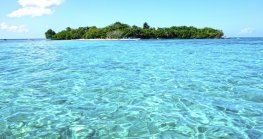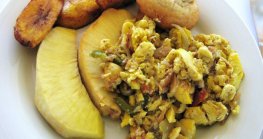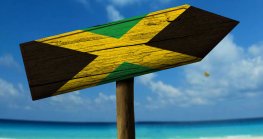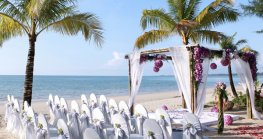April16thSun Transportation - Getting Around Jamaica
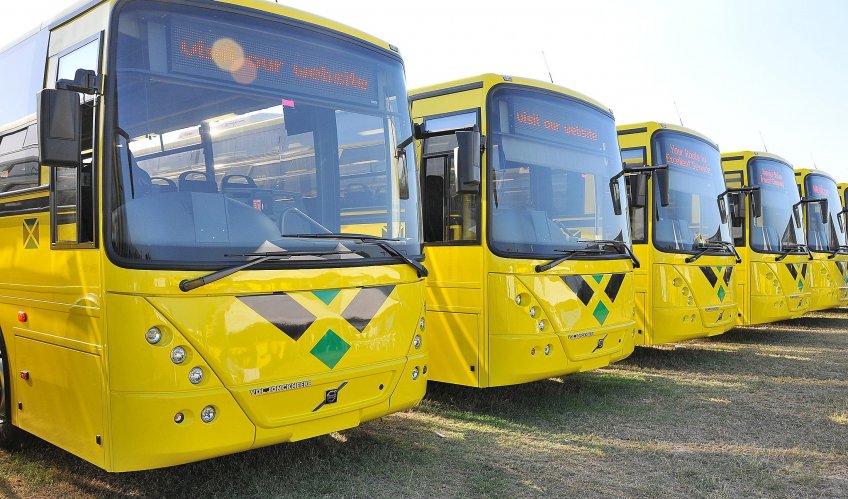
Taxis
Only Jamaica Tourist Board (JTB) approved taxis or minibuses should be used for excursions, airport transfers and sightseeing. Don’t hail a taxi in the street and don’t share a taxi with strangers. Most hotels and resorts have assigned JTB drivers who carry photo IDs and display a prominent blue JTB sticker on their front windscreen.
Licensed taxis – called ‘contract carriages’ – have red PPV license plates (those without such plates are unlicensed). These are usually expensive, but may be affordable if you share the cost with other passengers.
The Jamaica Union of Travelers Association operates island-wide and is geared almost exclusively to the tourist industry. Other taxicab companies are listed in the Yellow Pages, the region’s main directory.
The Transport Authority has established fixed rates according to distance (different rates apply for locals, and tourists – who pay more). Licensed cabs should have these rates posted inside. Taxis are also supposed to have meters, but many don’t use them.
Taxi Fares
The following are typical fares, based on a capacity of up to four people per taxi:
Route Approx. Fare
Kingston–Montego Bay US$200
Kingston–Ocho Rios US$100
Kingston–Port Antonio US$100
Montego Bay–Ocho Rios or Negril US$100
NMIA – Kingston (Uptown) US$35
DSIA – Montego Bay US$10
Buses
Kingston’s Municipal bus system operates a fleet of Mercedes-Benz and Volvo buses. Buses stop only at official stops. Fares are J$100, but students, children, disabled passengers and pensioners pay discounted prices.
Route Taxis
These communal taxis are the most universal mode of public transportation, reaching every part of the country. They operate like minibuses, collecting as many people as they can squeeze in along their specified routes. They're very convenient and are a cheap and easy way of getting around the island. Simply find them at their terminal in town (they go when full), or flag them down on the road and tell the drive where you want to get off. If you get in an empty taxi – particularly at the taxi station – you might be asked if you want to hire the vehicle outright, so be clear if you just want to pay the regular fare instead of a charter.
Most route taxis are white Toyota Corolla station wagons marked by their red license plates. They should have ‘Route Taxi’ marked on the front door, and are not to be confused with similar licensed taxis, which charge more. Avoid any taxi that lacks the red license plate.
Motor Scooter & Motorcycles
Dozens of companies rent out motorcycles and scooters; they’re available in any resort town. These companies are far more lax than the car-rental companies; you may not even have to show your driver’s license. If you are not an experienced motorcycle driver, it may be better to rent a scooter, which is far easier to handle. Scooters cost about US$35 to US$50 (J$3000 to J$4000) per day and motorcycles about US$45 to US$60 (J$4000 to J$5000) per day; note that deposits can be high.
Road conditions in Jamaica are hazardous. Always wear a helmet.
Tour Buses
Many major tour companies include transportation to and from hotel properties and major pick up points to connect cruise ship passengers and other visitors to the island’s top attractions.
Knutsford Express
Ride in comfort in these air conditioned large buses with on-board bathroom facilities, wifi and a movie or two, which moves between the major tourism hubs across the island at very affordable prices and excellent service.
Bus & Public Transportation
Traveling by public transportation is a great way to explore Jamaica. An extensive transportation network virtually links every village and comprises several options that range from standard public buses to private taxis, with minibuses and route taxis in between.
For the adventurous traveler who doesn’t mind getting up close and personal with fellow passengers without the comfort of air-conditioning, and is unfazed by the wild manoeuvres of the drivers, this is the cheapest way to get around Jamaica. There is usually no set timetable – buses leave when the driver considers them full – and passengers are crammed in with little regard for comfort. Taxis and buses tend to fill quickly early in the morning (before 8am) and around 5pm as people depart for work or home. There are fewer public transport options on Sunday.
Public buses, minibuses and route taxis depart from and arrive at each town’s transportation station, which is usually near the main market. Locals can direct you to the appropriate vehicle, which should have its destination marked above the front window (for buses) or on its side.
Public buses and minibuses are regulated by the Ministry of Transport & Works.
Buses
Large buses are few and far between in Jamaica due to the narrow twisting roads. Throughout the island there are bus stops at most road intersections along routes, but you can usually flag down a bus anywhere except in major cities. When you want to get off, shout ‘One stop!’ The conductor will usually echo your request with, ‘Let off!’
A worthwhile exception is the big comfortable, air-conditioned buses of Knutsford Express. Destinations include Kingston, Ocho Rios, Falmouth, Montego Bay, Negril, Savanna-la-Mar, Sant Acruz and Mandeville. Sample fares/times are Kingston–Ocho Rios (J$1600, three hours), Kingston–Montego Bay (J$2450; five hours). Online booking is available, along with student, senior and children fares.
Costs
Taking public transportation is fairly inexpensive. Buses and minibuses charge in the neighborhood of J$100 per 50km, and route taxis charge about J$150 to J$250 per 50km, with short rides of around 10 minutes costing J$100. As an example of longer routes, at the time of writing, a coaster from Kingston to Port Antonio (two hours) cost J$450.
Minibuses
Private minibuses, also known as ‘coasters,’ have traditionally been the workhorses of Jamaica’s regional public transportation system. All major towns and virtually every village in the country are served.
Licensed minibuses display red license plates with the initials PPV (public passenger vehicle) or have a JUTA (Jamaica Union of Travelers Association) insignia. JUTA buses are exclusively for tourists. Public coasters don't run to set timetables, but depart their point of origin when they’re full. They’re often overflowing, and the drivers seem to have death wishes.
Hitchhiking
Hitchhiking is common enough among Jamaicans but, because public transportation is absurdly cheap, few tourists stick out their thumbs.
Hitchhiking is never entirely safe in any country in the world and we don’t recommend it, especially in Jamaica where there are a lot of bad people looking to take advantage of naive tourists. Travelers who decide to hitchhike should understand that they are taking a small but potentially serious risk. If you choose to take that risk, you will be safer if you travel in pairs and let someone know where you are planning to go.
Train
Currently there is no passenger railway system available for public in Jamaica
Rental Car Agencies
Many internationally recognized names have franchises in Jamaica as well as locally run island wide operations. Avis, Budget and Island Car Rentals are the most popular but there are many privately owned small operations that can also offer a great option in a particular region. Island Routes Tour Company also offers it’s unique Mini Routes Tour which allows you to rent a mini cooper for particular guided excursions.
YOU MAY ALSO LIKE
-
 Post By TTN T
Post By TTN T -

Money & Currency of JamaicaFebruary 23rd,
-

Protect Yourself Against Mosquitoes in JamaicaFebruary 23rd,
-

Tap Water & the Street Food of JamaicaMarch 03rd,

